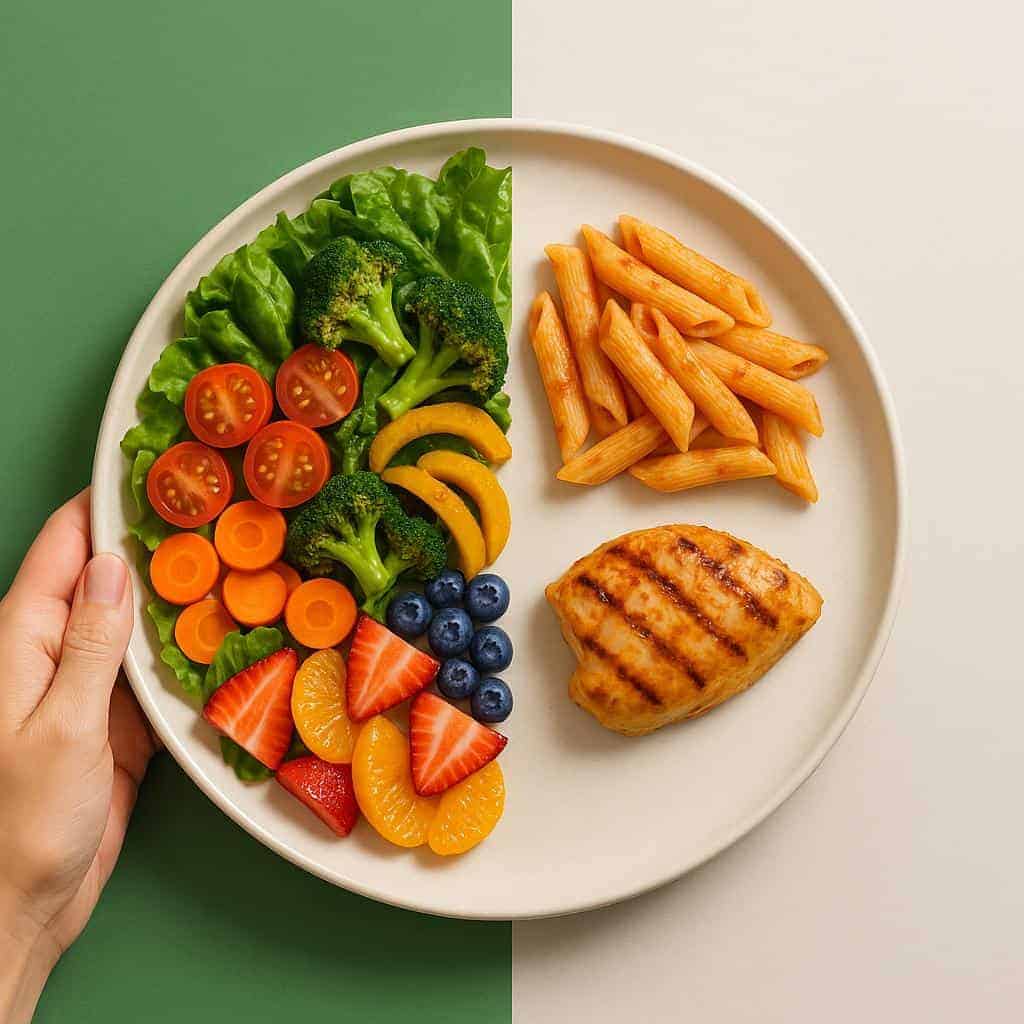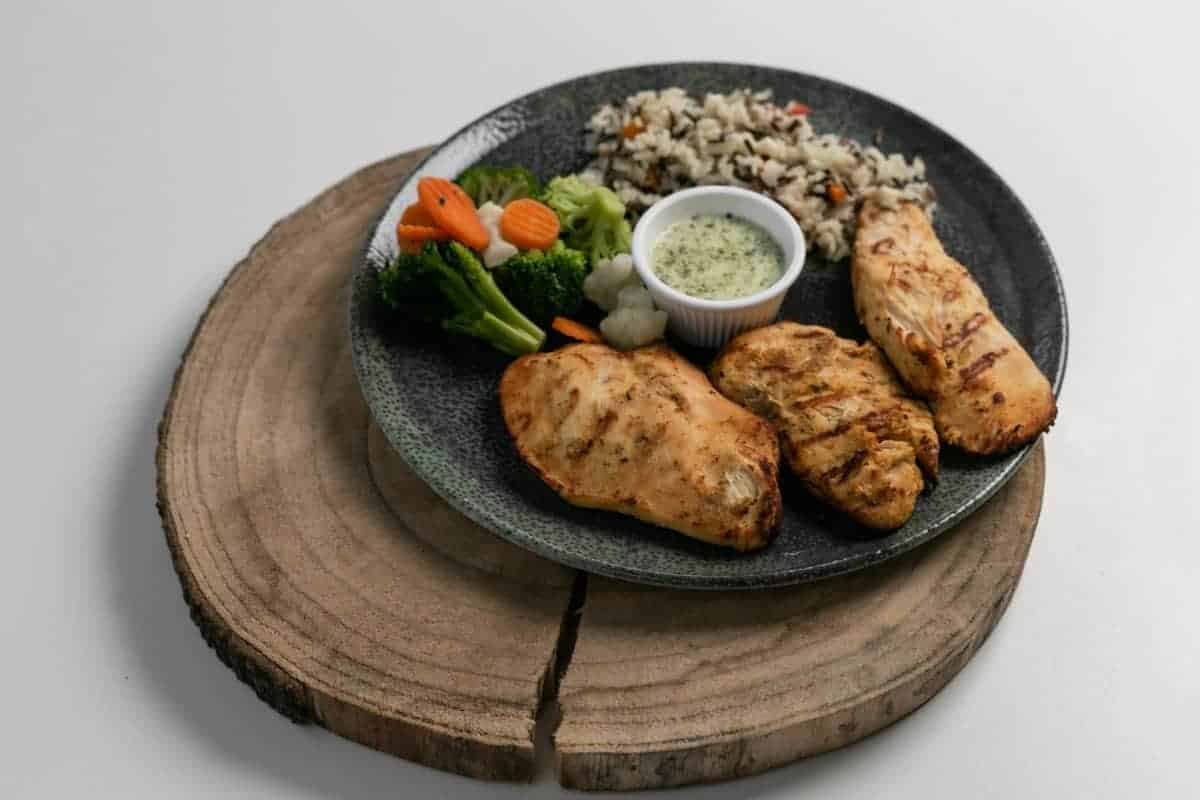How to Eat Balanced Meals Without Counting a Single Calorie
Counting every calorie can quickly turn eating into a stressful and confusing experience. For many, meticulously tracking numbers drains the joy from meals and creates unnecessary anxiety. Fortunately, there’s a more sustainable path: eating balanced meals by tuning into your body, making mindful choices, and understanding basic nutrition principles. This approach offers greater well-being, fewer restrictive food rules, and allows you to truly savor your meals. By focusing on balance instead of numbers, you can build a healthier relationship with food that supports both your physical and emotional health.
1. Fill Half Your Plate with Vegetables and Fruits

Making vegetables and fruits the centerpiece of your meals is a simple yet powerful way to boost nutrition—no calorie counting required. These foods are packed with essential vitamins, minerals, fiber, and antioxidants that help your body thrive. Enjoy a colorful salad, roasted veggies, or a vibrant fruit bowl to make your plate inviting and satisfying. In contrast, meals without produce often feel less filling and lack vital nutrients, leaving you less energized and less satisfied overall.
2. Choose Whole Grains Over Refined Grains

Opting for whole grains like brown rice, quinoa, oats, and whole wheat bread gives your meals more fiber, vitamins, and minerals. These choices help you feel fuller longer and promote steady energy levels throughout the day. For example, a bowl of brown rice with veggies leaves you more satisfied than a similar bowl made with white rice. Whole grains not only nourish your body, but also support better digestion and overall health compared to their refined counterparts.
3. Include a Source of Lean Protein

Adding a source of lean protein to every meal is essential for muscle maintenance and long-lasting fullness. Both animal proteins—like grilled chicken, turkey, fish, or eggs—and plant proteins—such as beans, lentils, tofu, and tempeh—offer valuable nutrients. For instance, a plate with grilled salmon or a hearty bean stew delivers protein without excess saturated fat. Whether you prefer plant-based or animal sources, regularly including protein supports balanced meals and helps keep hunger at bay between eating occasions.
4. Don’t Forget Healthy Fats

Healthy fats are vital for hormone health and help your body absorb fat-soluble vitamins. Add foods like olive oil, avocados, nuts, and seeds to your meals for flavor and satisfaction. Compare a salad sprinkled with walnuts to a plain one, or avocado toast to plain toast—healthy fats make meals more delicious and keep you feeling full longer. Including these fats regularly adds both nutrition and enjoyment to your balanced eating routine.
5. Practice Mindful Eating

Mindful eating means tuning into your body’s hunger and fullness cues, and truly savoring each bite. Try slowing down, putting away screens, and focusing on the flavors and textures of your food. Eating mindfully—versus rushing through a meal—often leads to greater satisfaction and makes it easier to recognize when you’ve had enough. This practice helps prevent overeating and encourages a deeper appreciation of your meals, making balanced eating feel more natural and enjoyable every day.
6. Watch Portion Sizes Using Visual Cues

Forget the scales and measuring cups—visual cues make portioning easy and stress-free. Use your hand as a guide: a palm-sized portion for protein, a fist for grains, and cupped hands for vegetables. This method is far simpler than weighing every bite and helps you serve up balanced, satisfying meals. It’s a practical way to eat well while staying present and relaxed at the table, rather than getting bogged down by numbers.
7. Mix Up Colors and Textures

Adding variety to your meals by mixing different colors and textures keeps eating interesting and boosts nutrition. Picture a plate with crunchy carrots, creamy hummus, and chewy whole grains—it’s not only beautiful, but also packed with diverse nutrients. In contrast, bland, monochrome meals often lack both excitement and essential vitamins. By aiming for a vibrant, textured plate, you’re more likely to enjoy your food and get a wider range of health benefits at every meal.
8. Limit Ultra-Processed Foods

Choosing whole or minimally processed foods gives you more nutrients and fewer artificial additives. Ultra-processed foods—like packaged snacks, instant noodles, and sugary drinks—often contain excess sugar, salt, and unhealthy fats that can undermine your health. Simple swaps make a big difference: reach for fresh fruit instead of candy, or opt for homemade soup rather than instant varieties. Focusing on real, simple ingredients helps you build naturally balanced meals and supports your well-being without the need to count calories.
9. Stay Hydrated with Water and Non-Sugary Drinks

Staying well-hydrated is essential for good digestion and steady energy. Make water, herbal teas, or sparkling water your main beverages instead of sugary drinks or sodas. Water quenches thirst without adding empty calories, while sugary beverages can spike hunger and negatively affect overall health. By prioritizing water and non-sugary options, you support your body’s natural balance and reinforce healthy habits that make balanced eating effortless.
10. Listen to Your Body’s Hunger and Fullness Signals

Paying attention to your body’s natural signals helps you eat the right amount—no calorie counting necessary. Learn to distinguish true hunger from emotional or habitual eating by checking in with yourself before and during meals. Pause mid-meal to notice if you’re still hungry or already comfortably satisfied, and aim to stop eating when you feel content, not stuffed. This mindful approach can naturally guide you toward balanced nutrition and a healthier, more intuitive relationship with food.
Conclusion

Eating balanced meals doesn’t have to be complicated or restrictive—you can nourish your body and enjoy food without tracking every calorie. By focusing on colorful produce, whole grains, lean proteins, healthy fats, and mindful habits, you create meals that fuel and satisfy. Embrace a flexible, intuitive approach that fits your lifestyle and brings joy to the table. Share a vibrant, balanced meal with friends or family, and let good food become a source of connection and well-being.
.article-content-img img { width: 100% }




